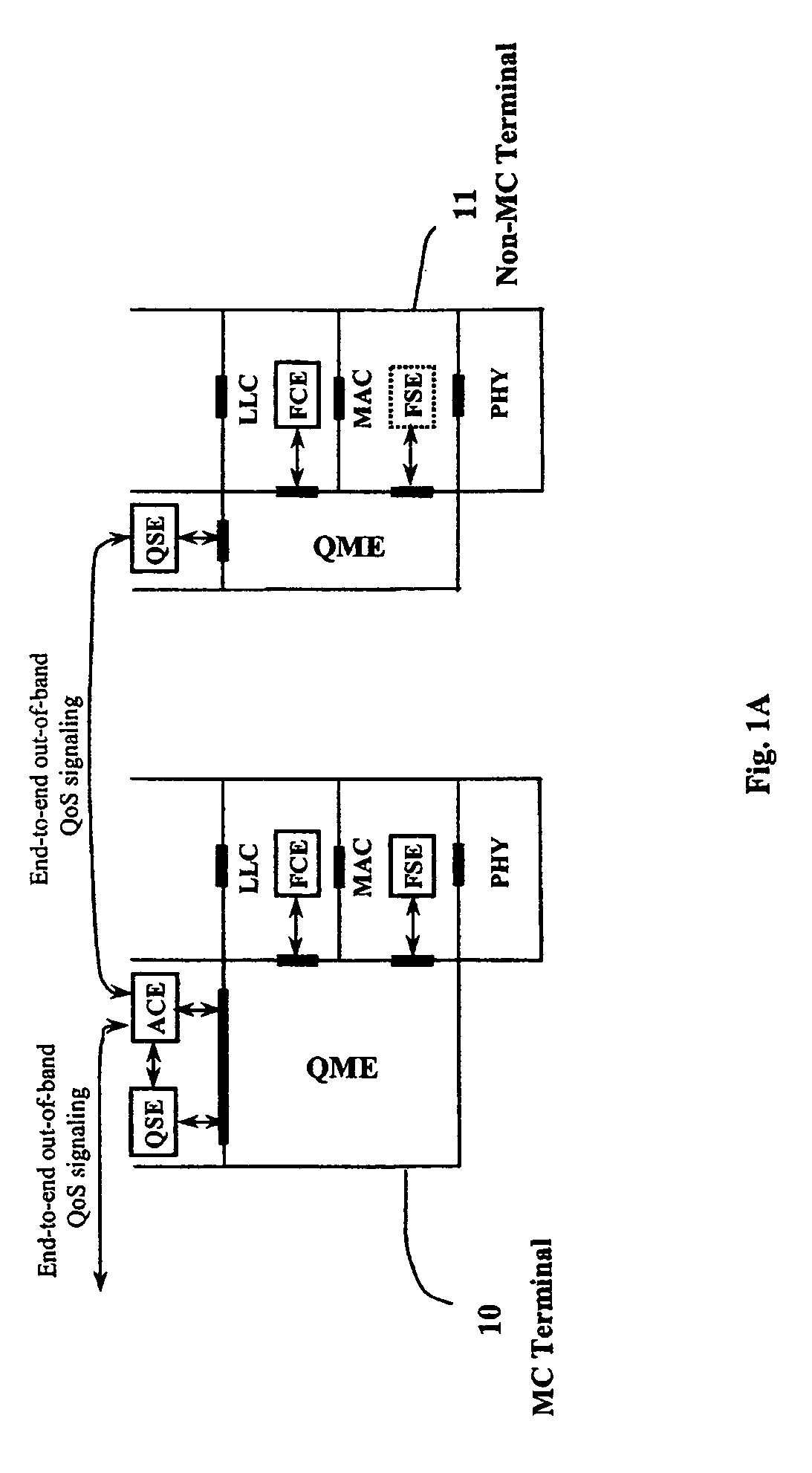Enhanced channel access mechanisms for a HPNA network
- Summary
- Abstract
- Description
- Claims
- Application Information
AI Technical Summary
Benefits of technology
Problems solved by technology
Method used
Image
Examples
first embodiment
[0040]According to the present invention, an upper layer protocol in an enhanced Media Control (MC) STA remaps the priorities of all v2 STAs in the network at the link sublayer so that none of the data packets from an upper layer in a v2 STA is mapped to physical priority level 7 (PRI 7) of the MAC sublayer. A MediaPlex-type protocol or another centralized medium access protocol can be implemented within the priority level 7 slot for providing preferential access to the HN communications medium.
[0041]In the exemplary frame sequence shown in FIG. 1B, there is pending traffic from the MC STA and v2 STAs before the start of frame 101. The MC STA gains access to the HPN medium through PRI 7 because the v2 STAs have PRI 5 and PRI 2 traffic. In frames 101 and 103, an enhanced MC STA transmits a polling frame, a data frame, or a management frame to at least one selected enhanced non-MC STA in the PRI 7 slot. Because traffic is transmitted in the PRI 7 slot, the PRI 6–PRI 0 do not occur in ...
second embodiment
[0055]In situations when it is not possible to remap link layer priorities for v2 STAs in an HPNA v2 network and a v2 STA is allowed to contend with an enhanced STA for medium access using PRI 7, medium usage can become inefficient because the HPNA v2 frame structure may consume a disproportionate amount of time in comparison to the time actual data is on the communications medium. That is, the Inter-Frame Gap (IFG), the priority slots (PRI), and the Backoff Signal Slots (SS) of the HPNA v2 frame structure may use a disproportionate share of time in comparison to the time that actual data is on the link. Moreover, the medium usage inefficiency may be magnified for the high payload bit rates contemplated for HPNA 3.0. the present invention provides four frame structure manipulation techniques for providing an enhanced HPN STA with preferential access to an HPN communications medium in the presence of at least one v2 STA, and for improving medium usage efficiency.
[0056]The HPNA v2 spe...
third embodiment
[0082]When the present invention is used during a polling frame sequence (i.e., a poll followed by response), a responding enhanced STA does not generate the priority and Backoff slots that are normally generated as part of the HPNA v2 frame structure. The responding enhanced STA would simply start transmission at the end of the Blocking Signal (or during the Blocking Signal a defined time period after the prior frame) because the enhanced STA would know a priori that the enhanced MC STA is using a spoofing technique to keep all v2 STAs from participating. The two messages (poll and response) would appear to a v2 STA to be like a single (unintelligible) message. When the enhanced STAs generates the Blocking Signal during the IFG period after the transmission, HPNA v2 STAs are prevented from accessing the medium. Subsequently, the MC STA can gain access to the medium and start to send another poll message. In this way, the medium is controlled by the enhanced STAs to create a CFP.
[00...
PUM
 Login to View More
Login to View More Abstract
Description
Claims
Application Information
 Login to View More
Login to View More - R&D
- Intellectual Property
- Life Sciences
- Materials
- Tech Scout
- Unparalleled Data Quality
- Higher Quality Content
- 60% Fewer Hallucinations
Browse by: Latest US Patents, China's latest patents, Technical Efficacy Thesaurus, Application Domain, Technology Topic, Popular Technical Reports.
© 2025 PatSnap. All rights reserved.Legal|Privacy policy|Modern Slavery Act Transparency Statement|Sitemap|About US| Contact US: help@patsnap.com



